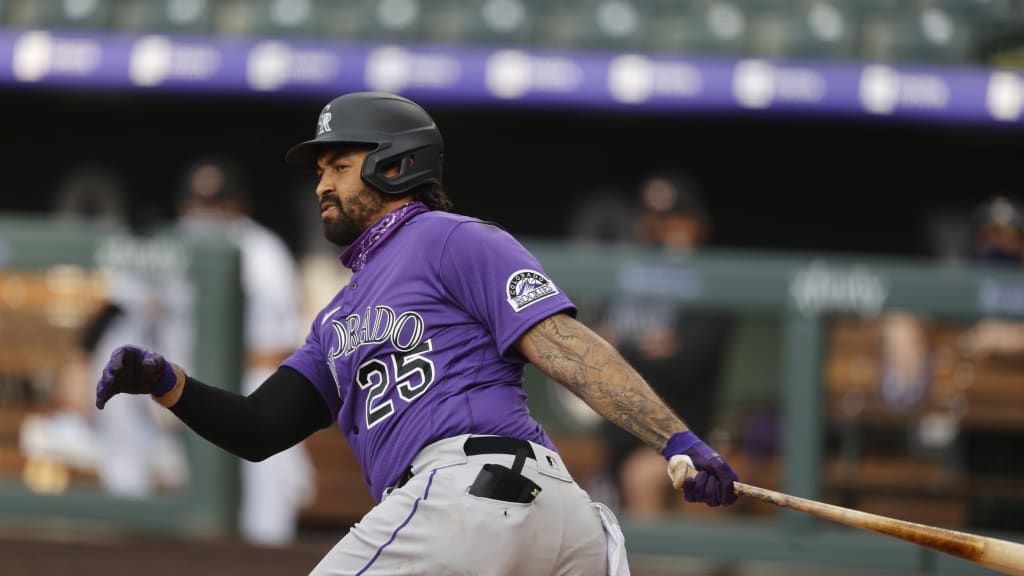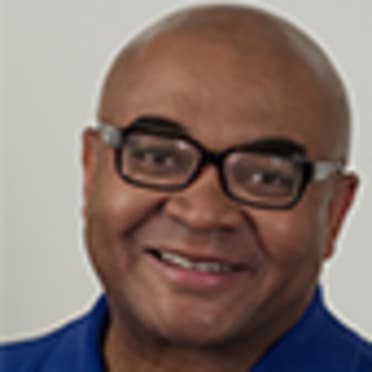
DENVER -- Friday at Rockies Summer Camp featured prominent subtractions -- relievers Bryan Shaw and Jake McGee, who were released. In turn there were familiar additions, with the announcement that three non-roster veterans -- outfielder Matt Kemp, utility man Chris Owings and righty reliever Daniel Bard, who last pitched in the Majors in 2013 with the Red Sox before control issues derailed him -- will be on the season-opening 30-man roster at Texas next Friday.
Five takeaways:
1. Big reliever contracts are risky, but these risks didn’t create a policy decision
Before the 2018 season, Rockies general manager Jeff Bridich granted three-year, $27 million contracts to McGee, who had his moments in '16 and '17, and Shaw, a key contributor to successful Cleveland teams. Bridich also signed closer Wade Davis for three years and $52 million, and reviews were positive.
But McGee and Shaw didn’t justify the expenditure with performance:
-- Shaw: 7-8, 5.61 ERA, .842 OPS against in 131 games.
-- McGee: 2-6, 5.54, .894 OPS against in 106 games.
Shaw, 32, found frustration trying to get his stuff to bite low in the zone the way it did in Cleveland. McGee, 34 on Aug. 6, was fastball-reliant early in his career with the Rays, but the search for a breaking pitch (first a curve, then a slider) and repeated left knee issues affected his performance.
Davis led the National League in saves with a club-record 43 in 2018, but posted an 8.65 ERA (second-highest for a reliever with 50 or more appearances in a season in Major League history) last year and is trying to find his form in Summer Camp.
But Bridich said this doesn’t necessarily mean he won’t spend on the bullpen in the future.
“There are a lot of examples, not just in the bullpen but in our recent history and deeper in your history where players have come in here on free-agent contracts and done very well," Bridich said. "There's histories of guys, on our team and on other teams, coming in on free agent contracts and having some good seasons, having some really good seasons, and struggle times during seasons as well.
“So I don't think there are any huge lessons that we're going to take and drastically move in one direction because we said goodbye to Jake and Bryan.”
2. Lost seasons give good info; so do Spring Training and Summer Camp
The Rockies turned the closer role over to Scott Oberg, who performed well before blood clots in his right arm ended his season in August. Righties Carlos Estévez and Jairo Díaz and lefty James Pazos pitched well in September. Righty Tyler Kinley, claimed off waivers from the Marlins, and lefty Phillip Diehl, have pitched well in both camps.
The Rockies also believe righty Yency Almonte, who is out of Minor League options, is ready to contribute.
“We just felt as though the direction of our pitching staff, for this season and moving forward, would be such where some names that are going to be on our roster are going to be names that you're going to look for next year,” manager Bud Black said.
3. Kemp still has it
Kemp was limited to 20 games last year with the Reds because of a rib injury and after signing a Minor League contract with the Marlins over the winter hit .143 with 11 strikeouts in 30 plate appearances. But Kemp has a 1.005 career OPS at Coors Field (mostly with the Dodgers).
“He’s moving well, the bat speed is there,” Black said. “He just needs repetition.”
4. Least surprising of all ...
Black said the conversations with all three who made it were “uplifting,” but frankly he could put Owings on the team based on his performance in original Spring Training. Owings started at second base for the Pinstripes in Friday night’s intrasquad game and doubled in his first two at-bats. He and Garrett Hampson will be twin infielder-outfielder, right-handed-hitting, baserunning threats, sometimes as starters and sometimes as subs.
Owings, Hampson and No. 1 prospect Brendan Rodgers could step in at second base when Ryan McMahon moves to first base and allows Daniel Murphy to be the designated hitter.
5. No horror for Bard
Bard’s route back to the Majors was hard enough. To complete it, he had to show in Summer Camp that his fastball and his breaking pitches from an unusual arm angle work at Coors Field.
“I got a little nervous playing catch the first couple days here last week -- my sinker wasn’t sinking at home,” Bard said. “Fortunately I got on the mound and I had some sink, maybe not exactly the same as at sea level but it definitely has enough movement to be a useful pitch, and the other ones seem to be playing pretty fair.”
